Bruce Morrison is a working artist and photographer living with his wife Georgeann in rural southeast O’Brien County, Iowa. Bruce works from his studio/gallery–a renovated late 1920s brooding house/sheep barn. You can follow Morrison on his artist blog, Prairie Hill Farm Studio, or visit his website at Morrison’s studio.
Wild Four-O’Clocks (Mirabilis nyctaginea) are from the Four-O’Clock family (Nyctaginaceae). This perennial native plant is common throughout Iowa, and sources describe it as preferring drier conditions and soil, particularly disturbed sites. All of our pasture populations in southeast O’Brien County are along the fence line next to the gravel road that borders our pastures and acreage.
The plants are not more than a couple feet tall on our site, but they can be anywhere from 1-4 feet in height. The stems are nearly smooth, sometimes appear as reddish green, and are often multi-forked nearer the top.
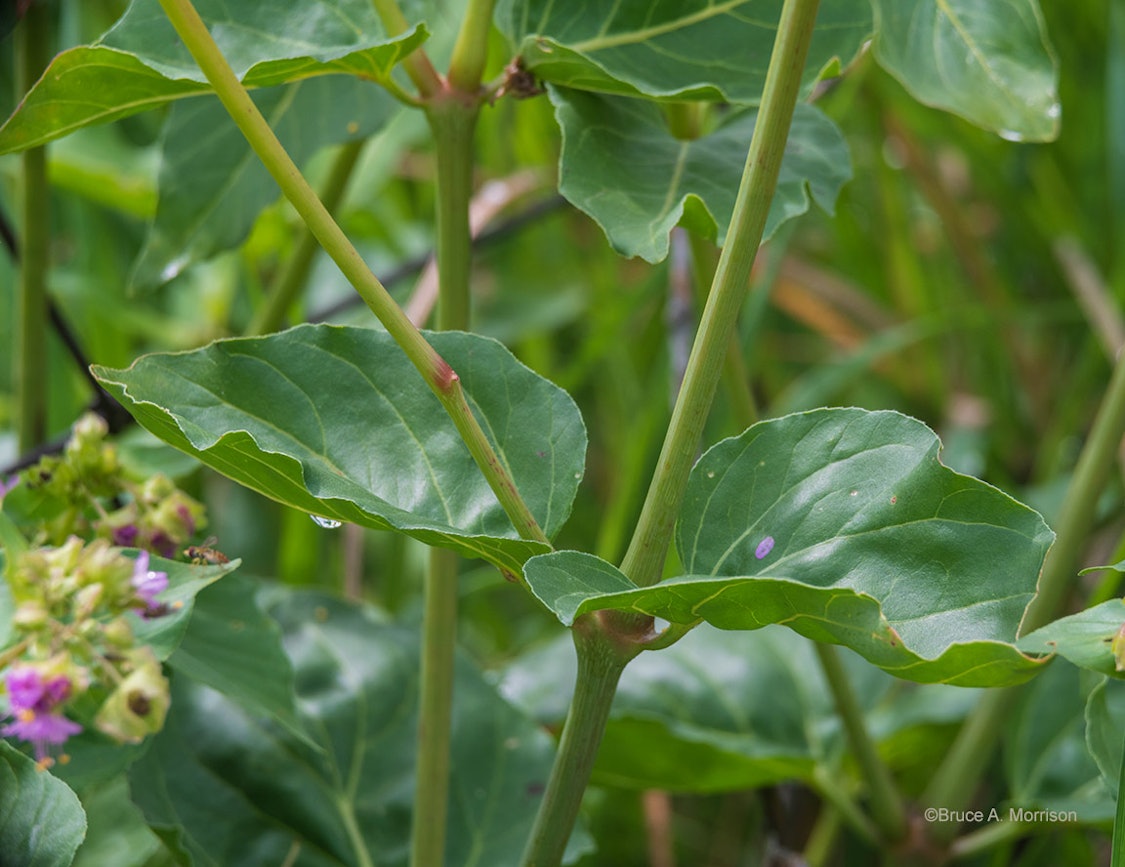
The opposite leaves are somewhat heart shaped, coming to a point at the tip and are larger at the bottom—maybe up to 4 inches in length and around 3 inches wide, being smooth above and below, with short petioles. The leaves near the top of the stems are much smaller and almost look like bracts instead.
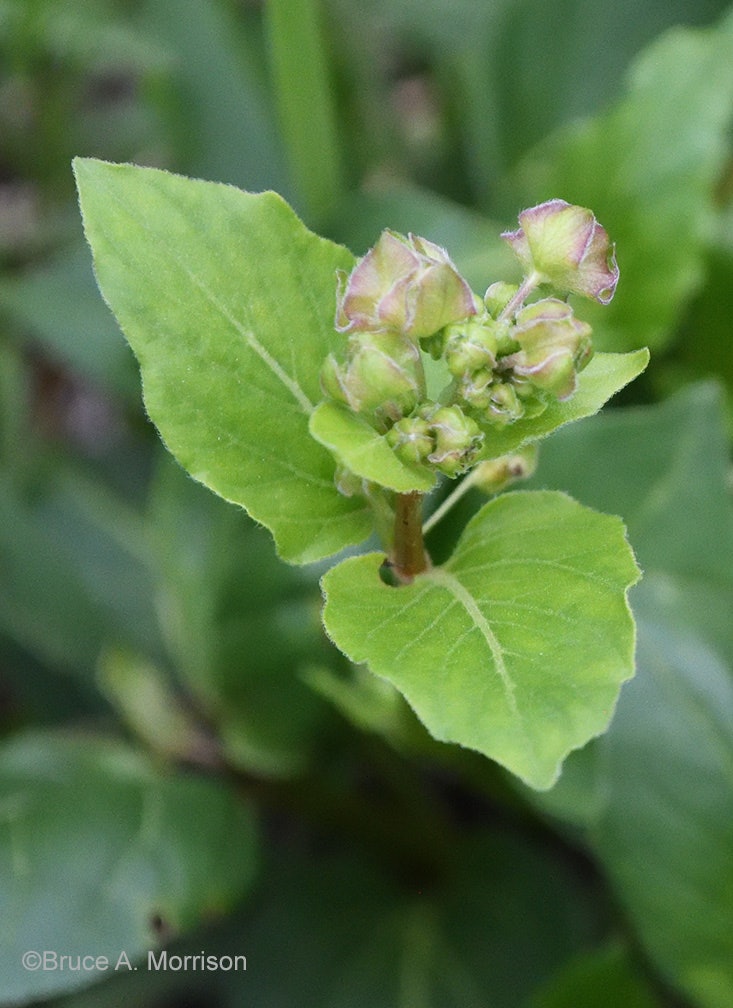
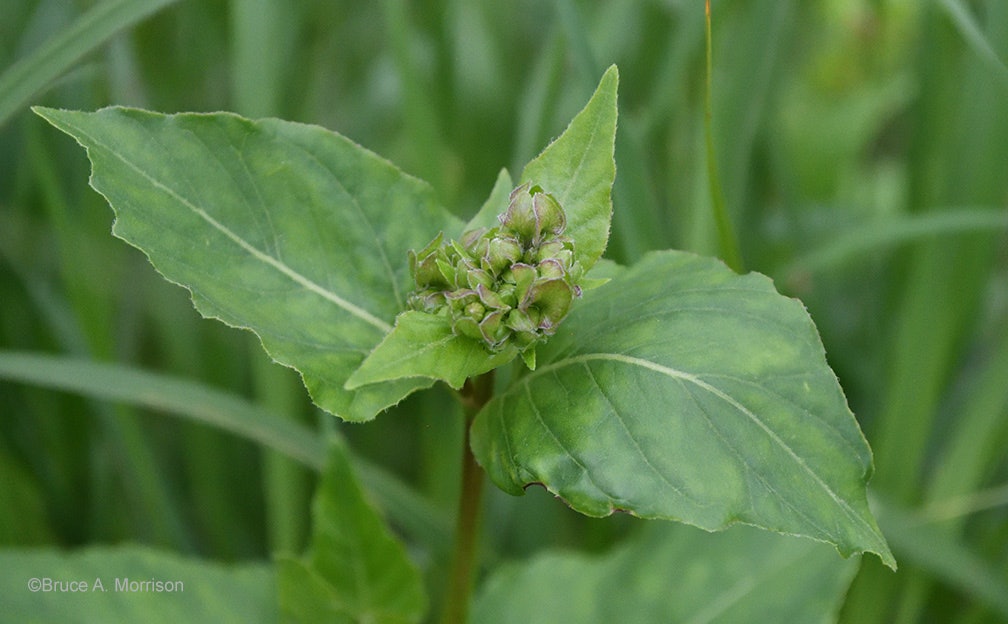
The flowers bloom anytime from May through August, sometimes even in September. As with many native plants, blooming happens earlier in southeast Iowa, whereas up here in the northwest corner of the state you’ll usually wait till June.
Magenta to purple bell-shaped flowers have five lobed green bracts about 3/8-inch across, and the sepals are the color element to these blossoms. Wild Four-O’Clocks do not have true petals—who knew? We novices get surprises whenever delving into the details; I guess we’re never too old to learn new things.
Flowering takes place late in the afternoon…hence “Four-O’Clocks.”
I have always thought these flowers were so exquisitely delicate close-up through the camera lens!

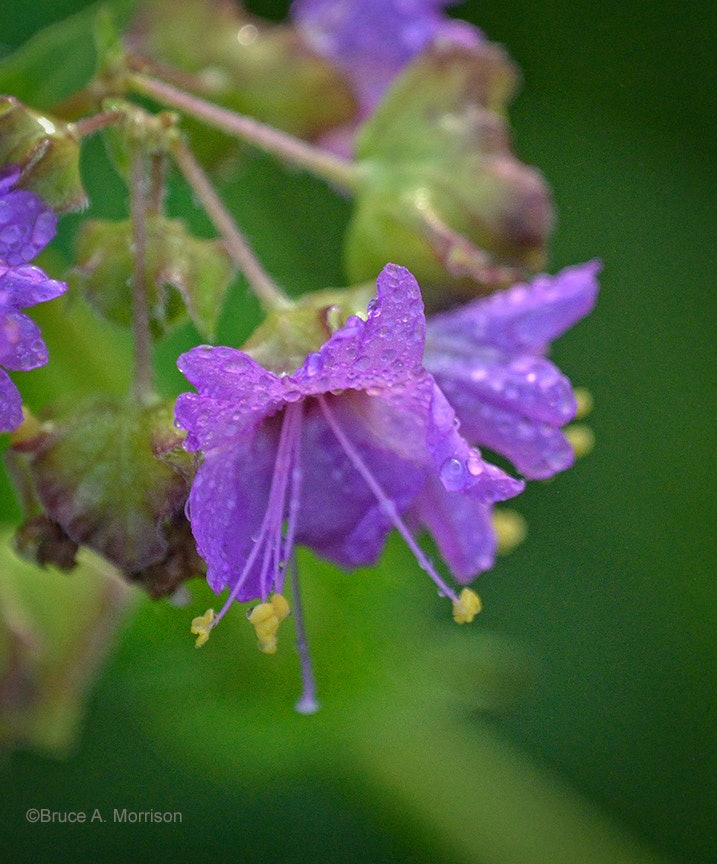
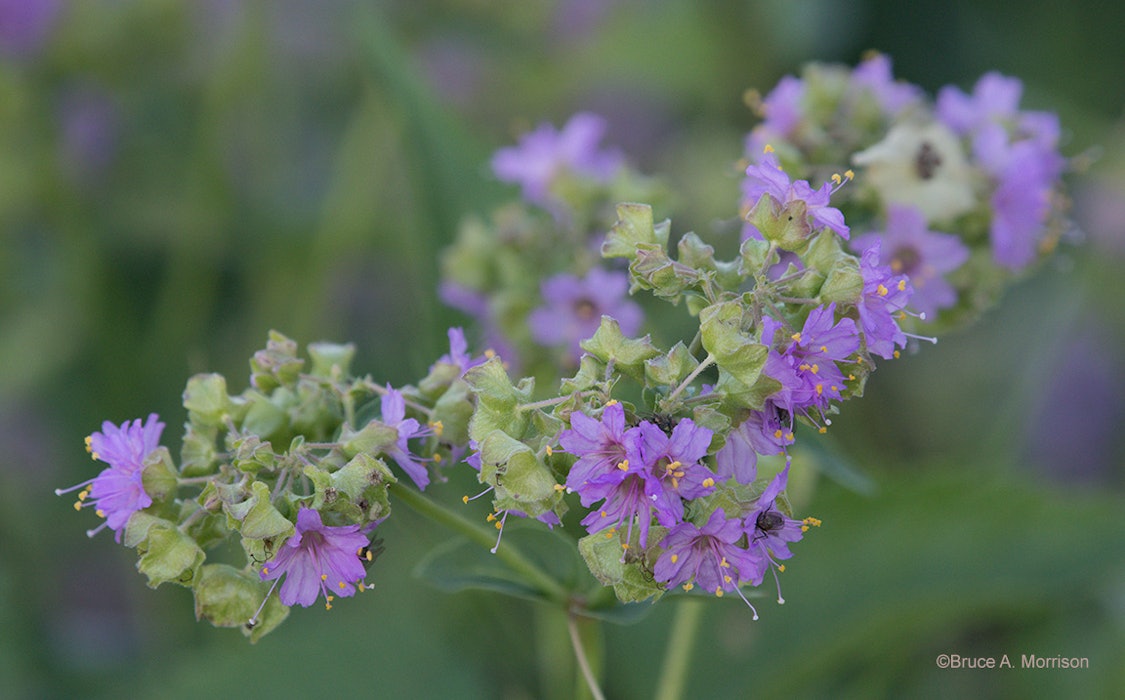
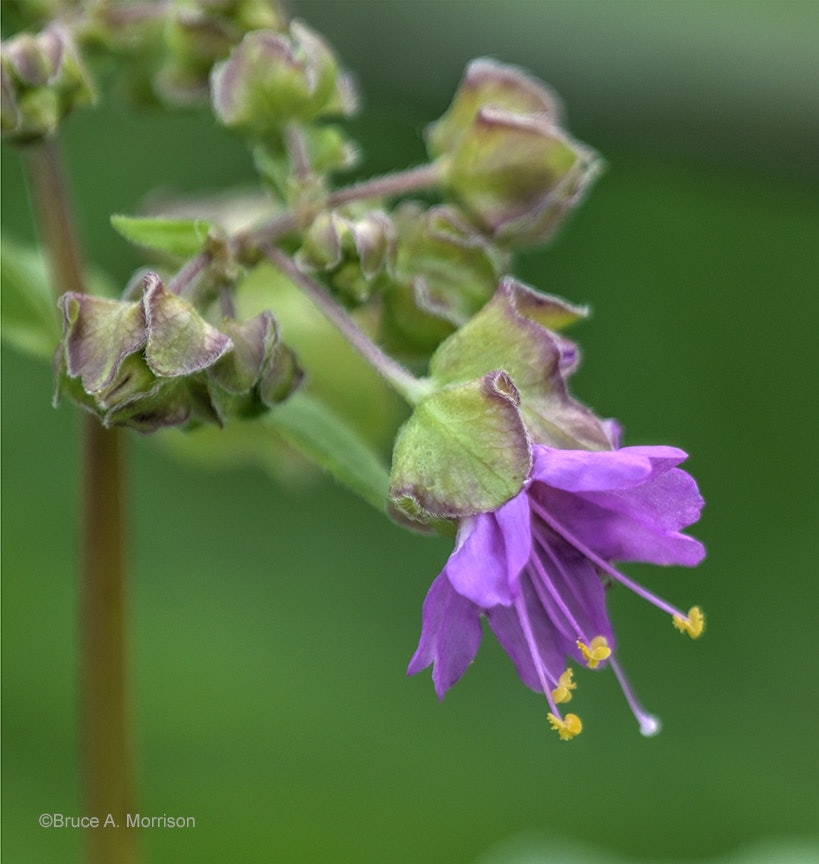
As far as pollinators, I’ve seen everything from bees and moths to hummingbirds visiting these flowers. While I photograph the blossoms, it always seems there are flies and even ants getting into the act. However the one pollinator I almost always see on the Wild Four-O’Clocks “here” is the Common Looper Moth (Autographa precationis). The Illinois Wildflowers website states that the plant is “visited primarily by long-tongued bees, short-tongued bees, and moths.”
From what I see with the Common Looper Moth, it seems to fit the bill…hovering just like any of those nectar and pollen feeders.
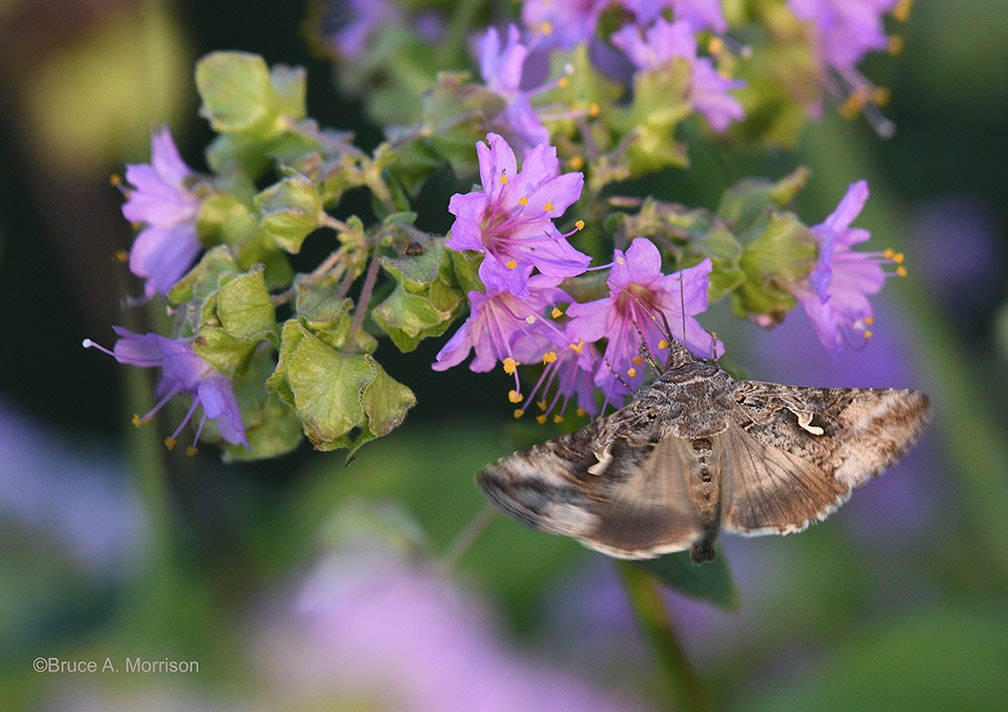
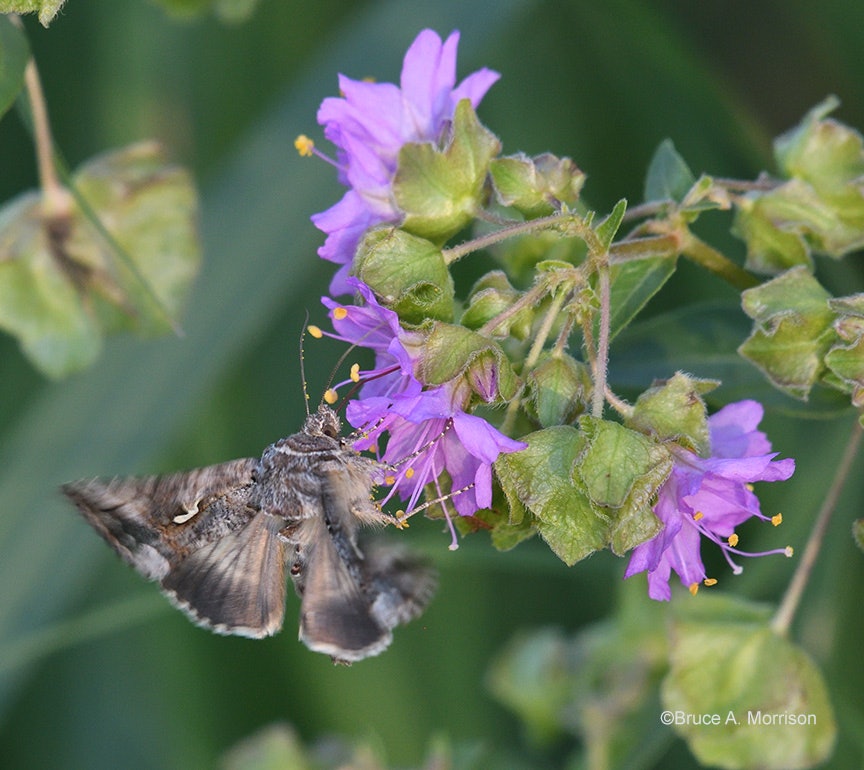

The Wild Four-O’Clock begins bearing mature fruit in July and here they mature as late as September. The seed is found in a star-shaped hairy capsule. As it opens the seed is visible as an elongated, maybe 1/16th inch or slightly longer brown five ribbed hard nutlet.

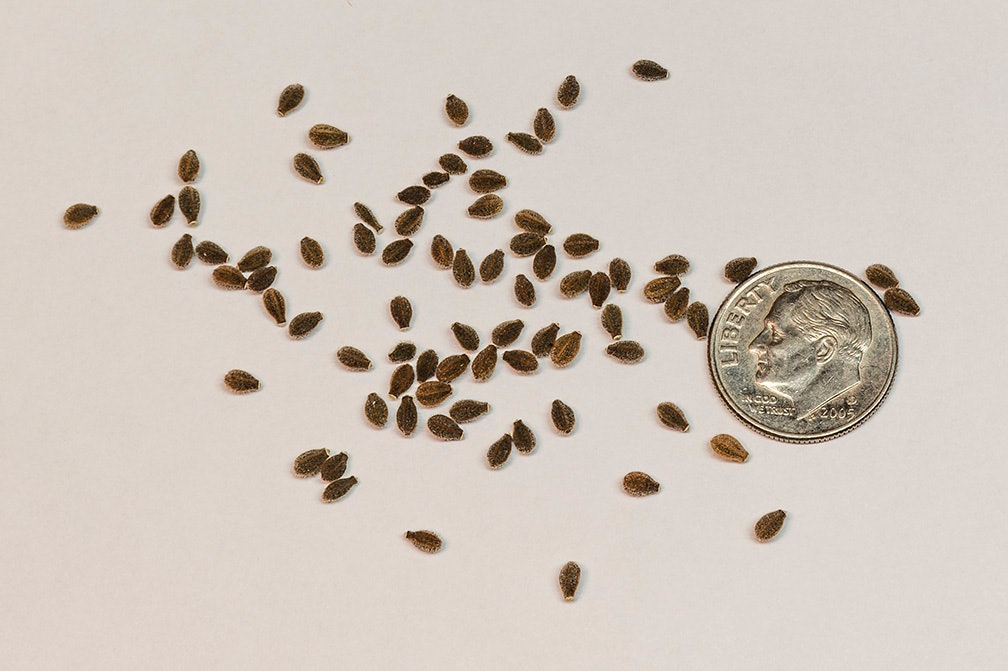
Wild Four-O’Clock would be a good native prairie plant to use when starting or adding to a small renovation or plot. It’s easy to collect and no special treatment is needed for seed prep. I would recommend surface planting. It is a sun loving plant but can take short periods of shade, and seems to prefer a less rich soil: sandy, gravelly or even clay perhaps.
I haven’t seen any issue with insect damaging this plant, and I’ve read that deer avoid it. I could believe that, as nothing has ever browsed the plants along our pasture’s edge.
This is a neat native plant that may be overlooked, but is certainly one to encourage if it finds a foothold in your prairie. Remember: those beautiful little magenta bee and moth magnets can also bring in the hummingbirds.

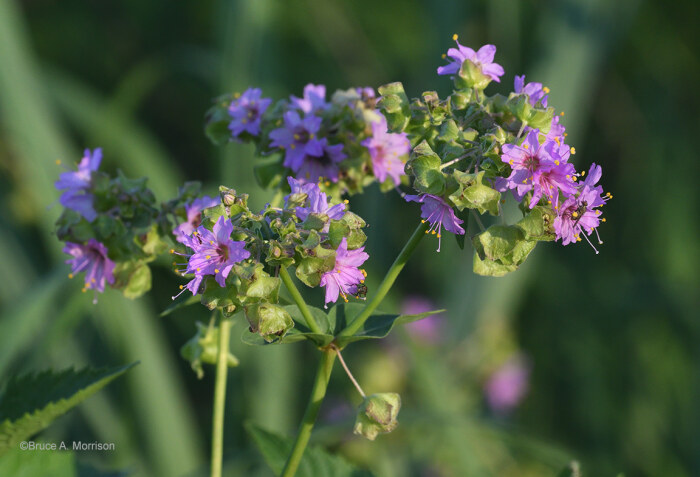
2 Comments
How nice to see this flower getting attention and great photos
Many years ago, when I was first learning about Iowa prairie flowers, a friend pointed out that my property had a few Wild Four-O’Clocks. He added that they were common and kind of weedy, but I was thrilled anyway. A native Iowa plant species, yaaay! And they really are beautiful and very good for pollinators. Thank you, Bruce Morrison.
PrairieFan Thu 13 Jul 11:57 AM
Thank you!
Thank you PrairieFan! I felt the same as you did when I first found and identified them…anything native and helpful for pollinators is fine by me!
Prairie Painter Thu 13 Jul 2:26 PM